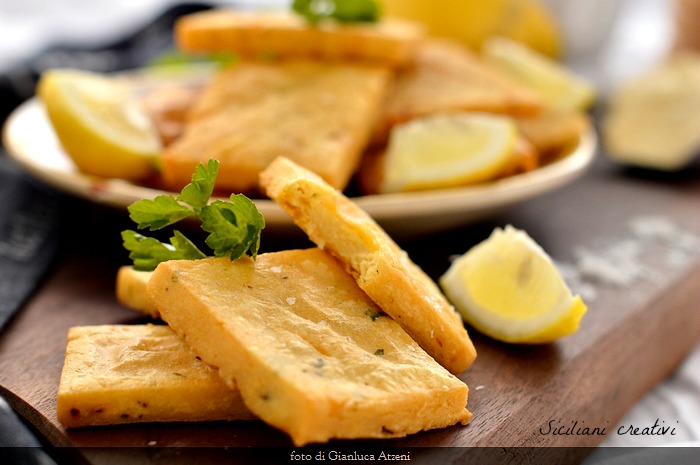
Photo by Natasha Mamysheva
Just about every weekend of my childhood, my family would drive from our home in Racine, Wisconsin, to Milwaukee, where we'd visit with relatives and enjoy classic Sicilian suppers. My Nonna had a pantry full of ingredients from Italian grocer Glorioso's.
One of these staples was chickpea flour, farina di ceci, which is made by crushing dried garbanzo beans.
Using this versatile, gluten-free, and protein-packed flour, she'd often make panelle, chickpea flour cutlets that she'd serve between freshly baked Sicilian bread.
I was delighted to discover a panelle recipe just like my Nonna's on Ada Parisi's Siciliani Creativi in Cucina. We recently discussed all things chickpea flour, a superfood you can now find at most supermarkets. Ada, who currently calls Rome home, was born in Messina, Sicily, and aims to make Sicilian cuisine better known through her recipes.
How is chickpea flour made?
Chickpea flour is simply obtained by crushing dehulled chickpeas: the chickpeas are ground until they become an impalpable powder that is slightly yellow-colored. It is also possible to prepare it at home using common dried chickpeas. Just wash them, toast them in the oven at 150 degrees for about 20 minutes, and then blend everything in a food processor until you obtain flour.
What are some uses for chickpea flour?
Chickpeas are a food widely used in traditional recipes from various Italian regions. For this reason, but also for cultural reasons (they're an ingredient that ancient farmers always had in their pantries, cheap and nutritious), chickpeas and chickpea flour are so used in Italy.
How does its use vary by region?
Among the main Italian recipes with chickpea flour is farinata, a type of low focaccia made with chickpea flour, extra virgin olive oil, and aromatic herbs such as rosemary. Widespread in various regions (Liguria, Tuscany, and Sardinia), it is also called fainá or cecina. In Sicily, chickpea flour is used to make panelle, fritters with chickpea flour, pepper, and parsley, to be eaten inside a sandwich (the famous pane e panelle). It is also possible to prepare vegan omelets with chickpea flour and vegetables. But also highly protein legume gnocchi by adding flour, eggs, and grated cheese. With chickpea flour, you can also make desserts: in Sicily, cassatelle di agira is a famous, sweet raviolo that contains chocolate and chickpea flour inside.
Why is chickpea flour so widely used in Italy?
It is a legacy of Italian peasant culture. Chickpeas are a very traditional and widespread crop in different regions, especially in central and southern Italy. Furthermore, in addition to being an ingredient in various typical recipes, today, they meet the needs of those who are intolerant to gluten or celiac disease.
What are the health benefits of chickpea flour?
Chickpea flour, like chickpeas, is rich in vegetable proteins with medium biological value. It contains little fat and a lot of fiber, as well as a good amount of vitamins B1, A, and E, in addition to mineral salts such as phosphorus and potassium. It is gluten-free and has a low glycemic index; therefore, it is suitable for celiac diets and recommended in the diet for diabetics.
What do you hope at-home cooks will take away from your recipes?
I hope that those who read my recipes will share and make their own idea of a seasonal diet linked to the territory and small productions. The valorization of Italian agricultural and agri-food products in every kitchen is the key to eating healthily (as the Mediterranean Diet says) and helping the agricultural supply chain increase income with what it produces.
>>Get Ada's panelle recipe here<<
If you enjoyed this article, consider subscribing to my newsletter for more content and updates!
